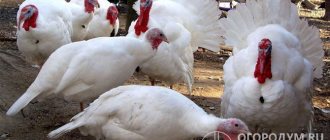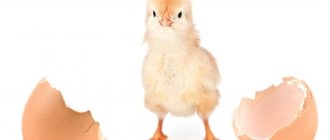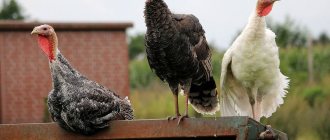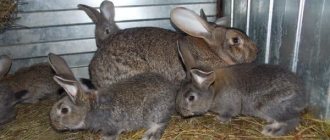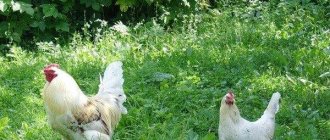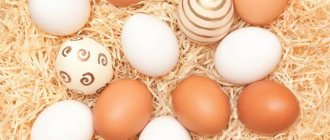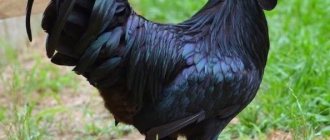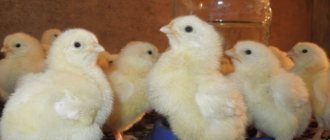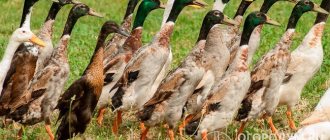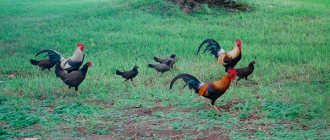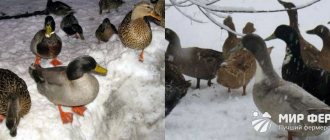Turkeys are in demand in private backyards due to the dietary properties of the meat. Before breeding poultry, you need to prepare a housing area and create the correct diet for turkey poults and adult livestock. Proper feeding is the key to a healthy and fulfilling life for any poultry. In order not to prepare mixtures for feeding turkeys yourself, we suggest that you purchase ready-made feed from Yuzhnaya Korona. Thus, you organize a complete diet at home, the birds get sick less, gain weight steadily, and in the future they bring you income. Compound feed is easy to dose, easy to store, there is no need to prepare a new mixture every time or keep a large supply of consumables. In this article we will tell you about the main features of feeding turkeys to ensure their healthy and full growth.
What can you feed turkeys at home?
The diet should include the following types of feed:
Cereals and legumes
- Corn - contains large quantities of amino acids and vitamins. Turkey poults begin to be given it in crushed form from 2-3 weeks of age. For adult birds, fattening in whole form is possible - up to 30% of the total food volume. Overfeeding causes obesity.
- Buckwheat is rich in protein, fiber, healthy fats, zinc, phosphorus, potassium and magnesium. Has a beneficial effect on the functioning of the cardiovascular system. When fed to turkeys for a long time, compared to corn, it does not cause obesity because it contains less starch.
- Barley is similar in mineral and vitamin content to buckwheat. The amount of fat and protein is sufficient to provide the bird with the daily requirement of nutrients. Rich in fiber, which improves digestion. Sprouted grains are especially useful. Before serving, the barley is cleaned, crushed, and can also be steamed with warm water or milk. The volume in the diet of young animals is no more than 6%, in adults - up to 40% of the daily diet.
- Wheat is especially valued due to its high content of vitamins B and E and fiber. To make complementary foods easier to digest, start with sprouted grains.
- Oats are rich in fiber and amino acids that improve metabolic processes in the body. To avoid intestinal blockage, the total percentage should not exceed 10-15% of the daily diet. It is recommended to feed the cereal in its purified form.
- Pulses - peas, beans, vetch, lupine - provide 10-15% of the daily grain intake in crushed form. It is included in the diet in the form of grain or cake. Pulses are especially important during the molting period, since the body needs a lot of protein to form new feathers. In the diet of adults, legumes can be no more than 80 g, in young animals - 5 g per head.
Animal feed
- Meat and bone meal, meat meal, blood meal, fish meal, and egg protein are rich in all essential amino acids.
- Dairy feeds - whey, curdled milk, buttermilk, skimmed milk. They serve as sources of complete protein, microelements and vitamins. Whey can be given instead of water. Dairy products in feeding turkeys, especially yogurt, are important for the prevention of gastrointestinal diseases, full growth, and increased egg production of birds, so they are recommended to be included in wet mash.
Feed of animal origin is introduced into the diet no more than 10% of the total volume.
Green feed
Fresh grass is a major source of fiber, vitamins and minerals. To feed young animals, use greens from the garden - lettuce, dill, parsley, green onions, garlic. They are washed, scalded with hot water, crushed and added to mash during daytime feeding. The volume of green feed is:
- in the first 10 days - 10 g per head, later the portion is increased;
- before 20 days - 30 g;
- up to 30 - 50 g;
- from one month - they begin to accustom them to meadow vegetation. When keeping turkeys in a pen on litter, the portion is increased by 20 g every 10 days;
- at 4 months - the portion is increased to 150 g.
Roughage
What else to feed turkeys at home? Before flowering, it is recommended to make hay from brome, festulolium, timothy, alfalfa and clover. It is during this period that the ratio of protein, plant fiber, and vitamins is considered optimal. If the hay was harvested after flowering, then due to its hardness, it is crushed and steamed before serving.
You can also make brooms for the winter from nettle, alfalfa, clover and quinoa. They are hung vertically or placed in feeders. Wormwood is also useful for turkeys; it is bitter, but stimulates appetite and acts as a preventative against parasites in the intestines.
Juicy feed
Silage is prepared from milk cobs of corn, cabbage leaves, meadow green grass during the flowering period, young nettles, cereal plants, carrots and sugar beets with tops. An acidic environment has a beneficial effect on digestion and increases resistance to the spread of protozoan parasites and helminths. Silage is introduced into the diet in the amount of 60-100 g per day. They get used to it gradually: first they feed small portions, sprinkling with a flour mixture. When feeding silage to birds, the chalk rate is increased by 10-15%.
It is also recommended to prepare fresh carrots. It is given to adult turkeys in amounts up to 30% of the daily intake of dry food. Frozen carrots keep well; before serving, they should be thawed in cold water.
Processing industry waste
Cake and meal (sunflower, soybean, rapeseed, flaxseed, peanut, etc.) are valuable protein additives to cereal grain feeds. They contain 30-50% protein, containing all essential amino acids. For example, soybean meal proteins are similar in amino acid consistency to animal proteins.
Separately, it is worth mentioning compound feeds. Usually they are purchased from large factories, but if you decide to feed turkeys in your backyard with compound feed, it is worth purchasing good mixtures. Growth, development, activity, health, and egg production depend on the quality of feed.
Feeding turkey poults on days 4-10
Turkey chicks continue to be kept in a brooder, but the regime for them is changed. The temperature is reduced gradually, bringing it to 30 C. Daylight hours are maintained at 24 hours. It is not recommended to sharply reduce the temperature. Young animals must gradually adapt to new conditions. If the chicks are cold, they gather under the lamp, huddling closely together. If the turkeys are hot, they stay away from the heater and sit with their eyes closed.
The diet remains almost unchanged. Chicks receive the same products, but their quantity increases. The only change is that the chickens are given mineral supplements. It could be chalk, crushed shell. To save money, homesteaders crush the egg shells and add them to mash for turkey poults. The total amount of feed is 38-40 g. It is suggested to use the following diet:
- 1 g – egg;
- 10 g greens;
- 5 g each of bran and cottage cheese;
- 10 g of skim milk;
- 7 g flour;
- 0.5 g chalk.
If the diet consists of combined feeds, then continue to use the starting version of the mixture. The quantity increases to 25 g. The weight of the turkey is 390 g, that of the turkey is 340 g. The chicks are growing. It is necessary to carry out placement in the brooder.
Turkey poults in a brooder
Advantages of feeding turkeys with compound feed
Ready-made mixtures are convenient to use: you do not need to measure the amount of ingredients and mix them yourself. Compound feed for turkeys from “Southern Crown” contains all the necessary vitamins and microelements. With proper use of mixtures, you can raise poultry with high weight and meat quality. Here you can choose food depending on the age of the bird:
0–8 weeks – “Start” (grain)
Ingredients: wheat, corn, corn germ cake, sunflower cake, soybean cake, meat and bone meal, fish meal, ZOM, pea concentrate, table salt, limestone flour, monocalcium phosphate, amino acids, antioxidant, probiotic, vitamin premix and enzyme.
9–17 weeks - "Growth" (pellet)
Ingredients: wheat, corn, corn germ cake, sunflower cake, soybean cake, meat and bone meal, pea concentrate, table salt, limestone flour, monocalcium phosphate, amino acids, antioxidant, probiotic, vitamin premix and enzyme.
18–30 weeks – “Finish” (pellet)
Ingredients: wheat, corn, corn germ cake, sunflower cake, soybean cake, vegetable oil, meat and bone meal, pea concentrate, table salt, limestone flour, monocalcium phosphate, amino acids, antioxidant, probiotic, vitamin premix and enzyme.
The average period for raising poultry is 30 weeks. Our feeding recommendations:
| Name of food | Age of turkey poults | Feed consumption on average per head g/day | For the entire period per head/day |
| PK-11 START (grain) | 0-8 weeks | 12-150 gr | 3.9 kg |
| PK-12 GROWTH (granule) | 9-17 weeks | 200-300 gr | 15.75 kg |
| PK-13 FINISH (granules) | 18-30 weeks | 290-310 g | 27.3 kg |
| Age of turkey poults, days | Air temperature under the lamp, °C | Length of daylight, hours | Lighting level, lux | Stocking density, heads/m2 |
| 1-7 days | 30-35 °C | 24 hours | 50 lux | 10 |
| 8-28 days | 25-29 °C | 17 o'clock | 30 lux | 8 |
| 29-40 days | 22-24 °C | 14 hours | 15 lux | 6 |
| over 40 days | 18-19 °C | 8-12 hours | 2-5 lux | 4 |
For normal life, birds require large amounts of clean drinking water. An adult needs 0.7 liters per day, more in hot weather. For turkey poults, drinking bowls should be smaller than for adults. Devices with water are installed in such a way that the bird cannot knock them over and wet their feet, as this threatens to catch a cold. There should be enough drinking bowls, because males fight for an individual place.
Walking pens
To prevent obesity, the bird needs space for physical activity. Walking pens are usually created for the summer. When fresh grass begins to grow, the sun comes out. Of course, birds can also receive fresh vitamins.
Inexperienced breeders should know that turkeys can fly. Of course, for short distances, but this is enough to fly over the fence and leave the yard. There are two ways to prevent escapes from your wards.
1. Create a pen with a mesh roof. As a rule, a garden net is used, which is mounted on top of the fence in the form of a roof. A fairly common method that ensures that all birds are in their place;
2. Wing clipping. This is a radical measure that should only be carried out by experienced farmers in exceptional cases. For example, with a small number of individuals and many years of experience in keeping birds. Of course, in large productions no one will trim wings.
When arranging a paddock or enclosure, it is very important to take into account some aspects and requirements for a place for walking. First of all, it is necessary to provide a shading angle where, in hot weather, birds can hide from the sweltering rays of the sun. Slate or other covering material is perfect for this, which is simply placed on the mesh roof, creating a shadow.
Walking turkeys
Individuals that are 1 to 2 weeks old can be released for walks. The young animals can walk for no more than 20 minutes, then they should be driven back into the house. As you get older, your walks become longer. And full-fledged walking is allowed only after the birds are covered with real and thick plumage, eliminating sunburn.
Important! Walking turkey poults is allowed only in good, calm and dry weather. In other cases, it is better to abstain in order to prevent the risk of bird disease.
When the birds are accustomed to the street and spend more time outside the house, then a feeder and drinking containers should be placed outside. Walks for adults should be carried out not only in summer, but also in winter.
An important condition for walking is the thermometer readings; they should not be lower than 20 degrees Celsius. In this case, it is recommended to lay a thick layer of hay or mown grass on the bottom of the enclosure. Such events will not allow the birds’ paws to freeze and get sick, and during the walk the birds will actively eat dry grass.
Features of feeding turkeys depending on age
- Newborn turkey poults up to 7 days. The first days after birth are the most dangerous for the bird, as they are characterized by an increased risk of brood mortality. There is no need to feed newborn turkey chicks for the first 10-15 hours after birth; at this time, their bodies still have nutrients from the yolk. However, you need to provide containers with sweetened water and vitamin C.
The first feeding is carried out up to 20 hours from the moment of birth, so that the chicks do not die of hunger; at this time they can be given a liquid mash of milk and ground, hard-boiled eggs. Also in the first days of the diet include cottage cheese, yogurt, grated carrots. Day-old chicks are fed every three hours.
- From 7 days to a month. Feeding is carried out up to 9 times a day, gradually reducing it. You can prepare wet mash from corn, wheat flour, bran, boiled eggs, cottage cheese, chalk. Chopped greens are also added - onions, cabbage, alfalfa, dandelions, carrot tops.
- After 1 month. They begin to add salt, chalk, and crushed eggshells to the food.
- After two months. Increase the amount of whole grain feed, include fish meal and hay meal in the diet. Sprouted grain, grated carrots, rowan and pine needles are considered especially useful.
- After three months. Feeding is reduced to 4 times a day. They begin to introduce coarser foods - wheat bran, finely crushed corn, bone meal with yeast bread, green grass, grape leaves.
- At four months. The bird begins to be fattened with compound feed for adult birds.
When feeding turkeys at home, it is important not to make mistakes with the type and proportions of food, the structure of the feed, which directly affect the digestion process. The optimal choice would be feed from “Southern Crown”. They will ensure high viability of chicks from the first days of life.
Place for females
Along with the generally accepted conditions for keeping turkeys, it is necessary to determine the location of the females in the poultry house. In a selected corner, nests are placed in which individuals will begin to hatch eggs. It is very important to install the nesting box in such a way that relatives cannot reach the clutch. Otherwise, the birds will begin to break the shell with their beak and eat it along with the contents.
For more comfortable incubation and laying, it is recommended to select an appropriate nest site. It is recommended to arrange a place for females in more secluded and protected corners of the room. The lighting there should be dim so that individuals feel safe and quiet. The twilight also prevents other birds from congregating near the female territory.
It is important to pay attention to the installation of nests. Experienced poultry farmers recommend building a small bench at a height of 30 cm from the floor. Females will easily jump onto a shelf with clutches and incubate eggs in conditions that are more comfortable for them. This height does not allow the nest to freeze, and will also protect the masonry from other birds.
If there are a large number of individuals, it is allowed to create entire steps to a height of no more than one meter from the ground. Several tiers for turkeys allow you to choose a convenient place for yourself.
Note! Female turkeys are loyal to the clutches of other turkeys, so it is possible to install one nest for several individuals at once. They will take turns incubating the eggs.
The location of the tiers for perching should be away from the entrance to eliminate possible drafts when the breeder enters. The rest of the birds are recommended to make ash baths, where the birds will clean their plumage, preventing the appearance of parasites on the body.
Features of feeding adults depending on the season
The feed should primarily consist of grain and mixed feed. It is very important to increase the content of animal protein in the diet to 30%. Features of feeding depending on the season:
Winter diet
As a rule, they try to stick to three feedings a day. In the morning and evening, grain or mixed feed is given; during the day, wet mash is recommended; in severe frosts, they need to be heated.
The basis of the winter diet is food rich in fiber, carbohydrates and vitamins - corn, barley and wheat. Fresh grass is replaced by silage and hay. They also give grated carrots, fodder beets, and clover. As a top dressing, it is recommended to include crushed acorns, chestnuts, and pine needles in the diet.
Summer diet
The number of feedings is increased to 4-5 times per day, especially when it comes to turkey hens and breeding turkeys. In the heat, poultry is reluctant to eat food, therefore egg production, hatchability of chicks and egg fertilization decrease. To bring the diet back to normal, increase complementary feeding with chopped green feed and fiber. In the morning, the birds are kneaded with a wet mash based on fresh herbs and flour, and in the evening they are fed grain, preferably sprouted; for lunch and afternoon snacks, it is advisable to give them mixed feed.
Reviews from poultry farmers
Lilia, 46 years old, Mtsensk
I have good experience in breeding poultry. I have always kept laying hens, broilers and ducks. Buyers began to often ask for turkey meat. I decided to get converters. I bought 5 turkeys and the same number of ladies to try. 4 chicks died. When the time came to kill the remaining ones, problems began. It is very difficult to control this bird, especially the males. Whatever they could think of to securely fix them. Then the whole family plucked the carcasses for a long time and painfully. I don’t recommend anyone slaughter more than one turkey a day. It's very hard work. Then difficulties with the sale began. Everyone wants the whole bird. But not weighing 20 kg! Nobody needs such giants. I had to sell them in parts, greatly reducing the price. As a result, when I calculated everything, the return on investment was lower than we would like. Overall, I was pleased with the turkeys, but keeping them for 6 months makes no sense!
Maria, 62 years old, Obninsk
When I first got turkeys, it was difficult to find accurate information on their maintenance. I was guided by the advice of friends and neighbors. As a result, I decided to keep only crossbreds. But a couple of years ago I took a chance and bought three dozen Big 6 babies. The seller recommended feeding them with mixed feed, so I ordered it from him. The growth rate was leaps and bounds! The first turkey, the largest, was killed at 3 months. Weighed 14 kg! The meat is delicious, everyone liked it. The rest were slowly sold as customers ordered. The last one was killed at 5 months for himself. The turkey weighed 22 kg. A very profitable bird. This year I will try budget-6.
Andrey, 55 years old, Novozybkov
I feed my turkeys only with homemade food: grain, peas, potatoes, apples, greens, etc. I don’t bother with the breed or feed. The main thing is that everything is natural, so they grow up healthy. And 3 weeks before slaughter, I force-feed the bird one fifth of the diet per day and keep it in the dark. The results are no worse than those of many broiler crosses fed with compound feed.
What to do if the bird is not gaining weight?
- The first reason is that turkeys may refuse to eat because they are not healthy. To avoid infection and death, the chicks are kept separately.
- The second reason is an incorrectly composed diet. If you do not use ready-made feed, then you need to cook the food immediately before serving. Feeders must be carefully maintained. Turkeys need to be provided with free access to fresh water at an average temperature of 23-25 ℃.
- The third reason is the type of bird. To avoid disappointment for the poultry farmer, before purchasing turkey poults, it is necessary to clarify what maximum weight can be achieved during rearing.
- The fourth reason is improper living conditions (microclimate, lighting, ventilation). In winter, the temperature in the poultry house should be maintained in the range of 8-15 °C. Overheating above 18 °C makes birds lethargic and leads to decreased appetite. In the warm season, it is recommended to walk turkeys daily, if conditions allow.
Room requirements for bird growth
From the first days of life, turkey poults must comply with the conditions of detention. The poultry house must meet all of the following aspects:
1. Temperature not lower than +10 degrees Celsius . This is one of the most important rules of content. During the cold season, the thermometer inside the poultry house should not fall below +10 degrees. Turkeys cannot tolerate cold, they can get sick and die. In this case, all cultivation costs will be in vain.
To prevent freezing of the room, work should be done in advance to insulate the walls, ceiling, floor, as well as window and door openings. It is very important to exclude drafts, but at the same time leave a window for ventilation, fresh air access and removal of ammonia vapors from the room.
2. Ventilation. The poultry house must be equipped with ventilation holes or even a hood. In summer, on hot days, the room should not be overheated; it should be a little cooler than outside. Therefore, it is very important to create a ventilation and airing system when equipping a room. It is allowed to install an electric hood, which will force air out of the room.
3. Air humidity should be within 65-70%. Such indicators must be observed, since very dry air, as well as too humid air, leads to the development of various diseases in birds.
4. Lighting. Turkey poults can be raised all year round, but it is very important to observe the daylight hours. This family of birds requires a 14-hour day. Therefore, it is necessary to install additional daylight lamps inside the poultry house to provide additional illumination after dark. For the correct life cycle, the lights must be turned on at 6 am.
In order to comply with all maintenance conditions, it is necessary to install a thermometer and moisture meter inside the poultry house. Thanks to these devices, the owner will be able to control and adjust the air temperature and humidity in the room.
Weight standards depending on age
When raising poultry for sale, special attention must be paid to the weight that an individual should gain in a specific period. In various sources you will find tables corresponding to monthly age and average weight in accordance with the cross. For example, turkeys of the white broad-breasted breed are often raised on farmsteads. Birds have the following development indicators:
- 1 month - 440-470 g;
- 2 month - 1.26-1.58 kg;
- 3 month - 2.59-3.61;
- 4 month - 4.21-5.21;
- 5 month - 4.97-7.65;
- 6 — 5,52-9,67;
- 7 - 6.22-11.77 kg.
Light cross young animals, which were bred from a white broad-chested breed, have accelerated development. By 4 months, males reach almost 9 kg, but subsequently their growth slows down. Adult turkeys can weigh just over 11 kg. Medium cross turkey poults can weigh 12.3 kg by 4 months. From 9 months of age their growth slows down. The weight of adult males reaches 19 kg. Heavy cross turkeys weigh 12.5 kg at 4 months. After puberty, the bird's development stops. By the year individuals gain up to 25 kg. Differences by gender also need to be taken into account. Typically, turkeys have a lower final weight.
Gain by breed
Poultry farmers who comply with feeding standards and poultry management requirements often rely on weight gain tables. However, the data in them is approximate. Even taking into account purebred, much depends on the quality of the hatching egg or purchased turkey poults, breeding conditions and other parameters, including weather, time of feeding, quality of preparations, proximity to other animals, etc. Therefore, the indicators presented below can be used only as approximate ones.
Big 6 turkey weight gain chart
| Age (weeks) | Weight, kg) | Average daily weight gain (g) | Feed consumption (g/day) | |||
| Males | Females | Males | Females | Males | Females | |
| 1 | 0,16 | 0,16 | 32,86 | 25,71 | 21 | 21 |
| 2 | 0,39 | 0,34 | 51,43 | 42,86 | 46 | 39 |
| 3 | 0,75 | 0,64 | 74,29 | 58,57 | 79 | 66 |
| 4 | 1,27 | 1,05 | 97,14 | 77,14 | 119 | 99 |
| 5 | 1,95 | 1,59 | 117,14 | 91,43 | 157 | 130 |
| 6 | 2,77 | 2,23 | 137,14 | 104,29 | 203 | 167 |
| 7 | 3,73 | 2,96 | 154,29 | 114,29 | 250 | 204 |
| 8 | 4,81 | 3,76 | 167,14 | 122,86 | 296 | 240 |
| 9 | 5,98 | 4,62 | 178,57 | 127,14 | 326 | 261 |
| 10 | 7,23 | 5,51 | 187,14 | 130 | 364 | 290 |
| 11 | 8,54 | 6,42 | 191,43 | 128,57 | 400 | 317 |
| 12 | 9,88 | 7,32 | 194,29 | 128,57 | 433 | 343 |
| 13 | 11,24 | 8,22 | 195,71 | 124,29 | 454 | 360 |
| 14 | 12,61 | 9,09 | 192,86 | 121,43 | 483 | 380 |
| 15 | 13,96 | 9,94 | 191,43 | 114,29 | 511 | 399 |
| 16 | 15,3 | 10,74 | 187,14 | 108,57 | 541 | 414 |
| 17 | 16,61 | 11,5 | 184,29 | 102,86 | 556 | 416 |
| 18 | 17,9 | 12,22 | 180 | 94,29 | 584 | 427 |
| 19 | 19,16 | 12,88 | 175,71 | 87,14 | 614 | 437 |
| 20 | 20,39 | 13,49 | 172,86 | 79,16 | 644 | 450 |
The graph clearly demonstrates the rate of average daily growth along with feed conversion
As can be seen from the graph, it is turkeys that bring the maximum benefit . The decline in growth begins from the 11th week (in males from the 14th), however, feed consumption does not increase as significantly as compared to turkeys.
A similar situation is observed with any other breed. The greatest benefit is obtained only until the daily growth rate drops.
In this case, not only the weight of the carcass is important, but also the percentage yield of its individual parts. The data in the table is based on the weight of skin and bones (except breast):
| Age (weeks) | Live weight (kg) | Breast (%) | Thighs (%) | Legs (%) | Wings (%) |
| Males | |||||
| 20 | 20,4 | 32,1 | 13,7 | 10,3 | 8,4 |
| 21 | 21,6 | 32,9 | 13,6 | 10,2 | 8,0 |
| 22 | 22,8 | 33,6 | 13,6 | 10,1 | 7,8 |
| Females | |||||
| 15 | 9,9 | 30,1 | 14,1 | 9,6 | 8,4 |
| 16 | 10,7 | 30,8 | 14,0 | 9,4 | 8,2 |
| 17 | 11,5 | 31,6 | 14,0 | 9,4 | 8,0 |
The longer fattening takes place, the higher the percentage yield of breast, which is considered the most valuable part of the carcass. Thus, long-term rearing of males only makes sense to obtain dietary meat.
Big 6 is a highly productive broiler cross created by English breeders, included in the State Register of the Russian Federation in 2007
Weight table Hybrid converter
| Age (weeks) | Weight, kg) | Average daily weight gain (g) | Feed consumption (g/day) | |||
| Males | Females | Males | Females | Males | Females | |
| 1 | 0,16 | 0,15 | 31,43 | 32,86 | 17 | 18 |
| 2 | 0,38 | 0,38 | 51,43 | 47,14 | 26 | 29 |
| 3 | 0,74 | 0,71 | 77,14 | 64,29 | 44 | 44 |
| 4 | 1,28 | 1,16 | 95,71 | 77,14 | 71 | 65 |
| 5 | 1,95 | 1,70 | 120 | 95,71 | 93 | 84 |
| 6 | 2,79 | 2,37 | 138,57 | 112,86 | 123 | 108 |
| 7 | 3,76 | 3,16 | 154,29 | 127,14 | 153 | 139 |
| 8 | 4,84 | 4,05 | 174,29 | 132,86 | 180 | 160 |
| 9 | 6,06 | 4,98 | 187,14 | 137,14 | 211 | 182 |
| 10 | 7,37 | 5,94 | 197,14 | 134,29 | 245 | 203 |
| 11 | 8,75 | 6,88 | 195,71 | 131,43 | 269 | 214 |
| 12 | 10,12 | 7,80 | 204,29 | 122,86 | 291 | 226 |
| 13 | 11,55 | 8,66 | 214,29 | 112,86 | 325 | 232 |
| 14 | 13,05 | 9,45 | 207,14 | 101,43 | 361 | 240 |
| 15 | 14,50 | 10,16 | 212,86 | 94,29 | 386 | 244 |
| 16 | 15,99 | 10,82 | 201,43 | 82,86 | 427 | 252 |
| 17 | 17,40 | 11,40 | 185,71 | 72,86 | 455 | 258 |
| 18 | 18,70 | 11,91 | 172,86 | 65,71 | 476 | 264 |
| 19 | 19,91 | 12,37 | 168,57 | 54,29 | 491 | 273 |
| 20 | 21,09 | 12,75 | 163,12 | 48,72 | 512 | 283 |
Hybrid converter is a North Caucasian cross for meat production, registered in the State Register of the Russian Federation since 2013
In hybrids, a decrease in daily weight gain is observed after 15 weeks of fattening in turkeys and 9 weeks in females. Once the young animals reach the age of 20 weeks, growth practically stops, and all energy is directed to the development of reproductive functions.
Weight gain chart for white broad-breasted turkeys
| Age (weeks) | Light subtype | Medium subtype | Severe subtype | |||
| Males | Females | Males | Females | Males | Females | |
| 1 | 0,047 | 0,047 | 0,053 | 0,05 | 0,053 | 0,052 |
| 4 | 0,37 | 0,33 | 0,37 | 0,32 | 0,39 | 0,33 |
| 8 | 2,1 | 1,7 | 3,5 | 2,7 | 3,6 | 2,7 |
| 12 | 4,1 | 2,9 | 5,8 | 4,4 | 5,7 | 4,3 |
| 17 | 6,3 | 4,3 | 8,6 | 6,0 | 8,5 | 5,9 |
| 21 | 8,6 | 5,4 | 12,3 | 7,6 | 12,5 | 7,7 |
| 26 | 10,1 | 5,8 | 14,8 | 9,0 | 1,9 | 9,1 |
| 30 | 11,3 | 6,1 | 16,7 | 9,5 | 17 | 9,9 |
| 34 | 11,3 | 6,1 | 17,3 | 9,5 | 18 | 10 |
The table shows that the average subtype of white broad-breasted turkeys in the growth rate up to the 21st week even exceeds the heavy one.
If the bird is not planned to be fattened for a long time, then the most profitable are the medium and light varieties of the breed.
Weight table Booth 6
| Age (weeks) | Weight, kg) | Average daily weight gain (g) | Feed consumption (g/day) | |||
| Males | Females | Males | Females | Males | Females | |
| 1 | 0,18 | 0,17 | 30 | 25,71 | 24 | 21 |
| 2 | 0,39 | 0,35 | 48,57 | 41,43 | 46 | 42 |
| 3 | 0,73 | 0,64 | 70 | 57,14 | 75 | 66 |
| 4 | 1,22 | 1,04 | 97,14 | 75,71 | 111 | 94 |
| 5 | 1,90 | 1,57 | 121,43 | 92,86 | 154 | 128 |
| 6 | 2,75 | 2,22 | 145,71 | 108,51 | 204 | 165 |
| 7 | 3,77 | 2,98 | 167,14 | 120 | 256 | 203 |
| 8 | 4,94 | 3,82 | 182,86 | 130 | 308 | 242 |
| 9 | 6,22 | 4,73 | 192,86 | 135,71 | 356 | 278 |
| 10 | 7,57 | 5,68 | 198,57 | 137,14 | 399 | 312 |
| 11 | 8,96 | 6,64 | 200 | 137,14 | 436 | 341 |
| 12 | 10,36 | 7,60 | 200 | 134,29 | 467 | 367 |
| 13 | 11,76 | 8,54 | 200 | 130 | 496 | 389 |
| 14 | 13,16 | 9,45 | 198,57 | 124,29 | 524 | 408 |
| 15 | 14,55 | 10,32 | 200 | 118,57 | 554 | 425 |
| 16 | 15,95 | 11,15 | 197,14 | 112,86 | 583 | 438 |
| 17 | 17,33 | 11,94 | 195,71 | 105,71 | 611 | 449 |
| 18 | 18,70 | 12,68 | 191,43 | 97,14 | 635 | 458 |
| 19 | 20,04 | 13,36 | 184,29 | 91,43 | 653 | 463 |
| 20 | 21,33 | 14,00 | 179,4 | 84,67 | 655 | 466 |
Booth 6 is an English cross for meat productivity, well adapted to various conditions.
The average daily weight gain in turkeys stops at 11 weeks, in turkeys - at the age of 10 weeks. Subsequently, the indicators decrease slightly, but feed consumption increases significantly. Keeping males for more than 24 weeks is unprofitable. At this point, their slaughter weight is approximately 25 kg.
Other turkey breeds
| Age (days) | North Caucasian | Bronze broad chested/Moscow | White Beltsville/Moscow | |||
| Males | Females | Males | Females | Males | Females | |
| 1 | 61 | 59 | 60/60 | 60/58 | 50/55 | 50/50 |
| 10 | 126 | 120 | 150/130 | 130/123 | 115/120 | 100/110 |
| 20 | 265 | 260 | 300/200 | 270/185 | 250/180 | 200/160 |
| 30 | 450 | 446 | 500/360 | 400/320 | 370/340 | 300/320 |
| 60 | 1150 | 1100 | 2100/1200 | 2650/950 | 1500/1000 | 1200/900 |
| 90 | 2180 | 2150 | 4100/2600 | 3000/2100 | 2800/2500 | 2100/2100 |
| 120 | 3600 | 2900 | 6400/4100 | 4600/3200 | 4500/4000 | 3000/3100 |
| 150 | 5800 | 4500 | 9000/5900 | 6000/4200 | 6400/5850 | 4000/4200 |
| 180 | 10500 | 5000 | 11200/7500 | 6900/5000 | 7800/7500 | 4500/5000 |
North Caucasian and bronze broad-breasted turkeys show good results. But for cultivation in the middle zone, Moscow breeds are better suited, as they are characterized by maximum adaptability to climate conditions, which ultimately has a positive effect on the profitability of their cultivation.
Poultry of domestic selection is better adapted to the climatic conditions of individual regions
Which breed of turkey to choose for breeding for meat depends on the personal preferences of the farmer, his available funds and capabilities. It is impossible to definitely name the most profitable one. For example, Big 6 turkeys are distinguished by noticeable weight gain, but are very capricious in their maintenance. Not every poultry farmer will be able to raise the entire flock without loss. In addition, such birds need high-quality feed, which is not cheap. In turn, Moscow Whites or North Caucasians can easily achieve high weight gain on a mixed and even completely natural type of feeding. Therefore, each owner, through trial and error, determines the ideal breed for himself.
What should you not feed turkeys?
In order not to harm the health of the birds and maintain weight gain, it is recommended to exclude the following foods from the diet:
- fiber for chicks under 10 days of age. Coarse fibers have a negative impact on digestion;
- meat and fish leftovers from the home table. Meat is poorly digestible and can cause intestinal obstruction. Fish bones can injure a bird’s larynx and esophagus;
- spoiled food. Please note that homemade mash may turn sour after 20 minutes;
- poisonous plants, including belladonna, wild rosemary, hemlock and hemlock;
- sweet foods provoke illness and worsen the condition of the bird.
Prohibited Products
To properly feed turkeys, you need to know what food you should absolutely not give them. Most of the bans concern food waste from the human table. The bird is not given:
- salty and spicy foods (herring, pickled and pickled cucumbers, marinades and hot sauces);
- snacks (chips, salted and sweet nuts, crackers with spices);
- confectionery products (chocolate, candies).
It is forbidden to give turkeys spoiled food - fermented, moldy, rotten.
Do not feed green and sprouted potatoes to the bird. This product contains poison - corned beef, which causes poisoning and death of the bird.
When letting turkeys out for a walk or preparing greens for them, you should pay attention to poisonous herbs, preventing them from getting into the feeder. This group of plants includes buttercup, henbane, datura, ash, hemlock, and St. John's wort.
Advantages of our turkey feed
| Complies with GOST and manufactured according to recipes approved by research institutes | The percentage of nutrients is within the recommended norm, while having low consumption | Take into account the characteristics of each age stage of turkeys |
| Promotes rapid weight gain and increases the bird’s resistance to various diseases | Feed "Southern Crown" | Before packaging they undergo heat treatment, which prevents mold, fungi and harmful microorganisms from getting inside the pack. |
| Eliminates the purchase of additional dietary supplements, since they already contain everything you need | Make it easy to comply with feeding standards and monitor the health of growing birds, avoiding obesity | Helps improve the taste and quality of meat, which increases the value of the product |
Vaccination - prevention of diseases
Turkeys are sensitive to many types of viral and infectious diseases. To avoid mass mortality of birds, it is mandatory to vaccinate the chicks. A vaccination card should be created for chicks, where the date of vaccination and the name of the drug should be recorded.
This will protect little turkey poults from developing illnesses in the future. They may be threatened by viral diseases: smallpox, Newcastle disease - the disease is also called the Asian plague or pseudoplague.
It is known that Newcastle disease cannot be cured. This is an extremely dangerous infectious disease that, once it enters the body of a bird, develops rapidly. Individuals with weakened immunity die immediately. The incubation period passes after approximately two weeks. What can cause the disease?
The source of infection is sick animals infected with a single-celled parasite. The virus is transmitted through direct contact and develops rapidly. It is noteworthy that upon examination, the farmer, as a rule, does not observe any visible causes of the disease.
YouTube responded with an error: The request cannot be completed because you have exceeded your quota.
Pros and cons of growing
Raising turkeys has positive and negative aspects. We should consider them in more detail.
Pros:
- homemade turkey meat is environmentally friendly, contains a huge amount of useful vitamins and microelements, is famous for its low fat content, and is dietary;
- broiler turkey eggs have high nutritional value and high taste;
- breeding for sale quickly pays off. The meat is considered rarer and costs more;
- Experienced breeders know: the breeding and further sale of turkey products is practically waste-free. You can sell feathers, down, eggs, meat, chicks of any age.
Minuses:
- special conditions for keeping young animals, high risk of mortality;
- young individuals require keeping away from other poultry due to possible diseases, the chicks are shy;
- prone to obesity, for prevention you should give more greens.
Keeping an adult bird in a pen
